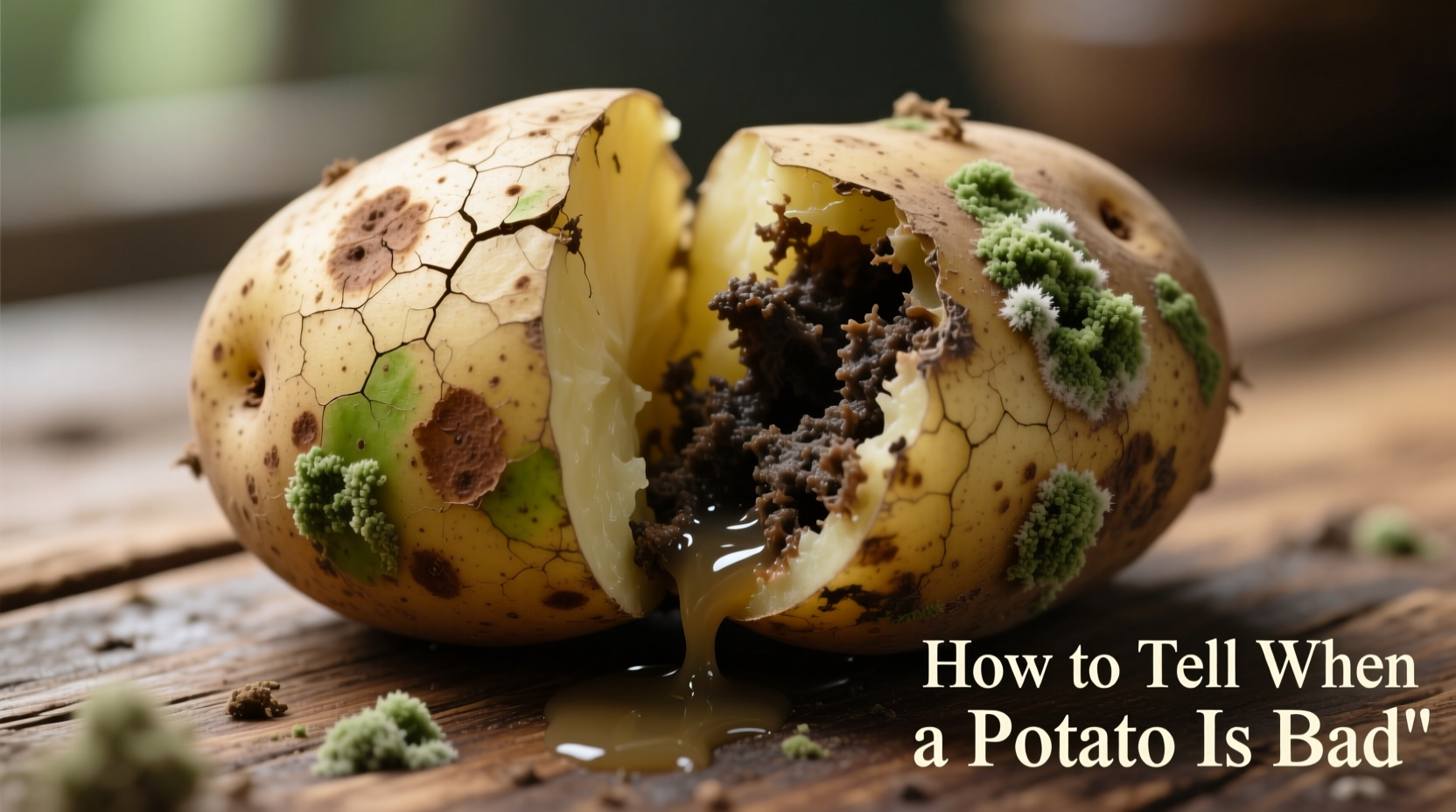Discard potatoes showing significant green discoloration, soft mushy spots, extensive mold growth, or foul odors. Slightly sprouted or wrinkled potatoes are generally safe if firm and the sprouts are removed, but never eat potatoes with visible mold or strong off-smells as they may contain harmful solanine toxins.
Spot Bad Potatoes Before They Make You Sick
Every year, millions of pounds of potatoes go to waste because home cooks can't accurately determine spoilage. Worse, some people risk food poisoning by eating potatoes past their prime. Knowing exactly how to tell when a potato is bad protects your health and saves money. This guide delivers practical, science-backed indicators you can use immediately—no guesswork required.
Your Visual Inspection Checklist
Start with a thorough visual examination under good lighting. Rotate the potato to check all sides. Here's what to watch for:
- Green patches anywhere on the skin (indicates solanine production)
- Dark brown or black spots that penetrate beneath the surface
- Mold growth appearing as fuzzy white, green, or black patches
- Excessive sprouting with long, thick sprouts
- Significant wrinkling indicating advanced dehydration

| Condition | Safe to Eat? | Action Required |
|---|---|---|
| Minor surface sprouts (¼ inch) | Yes | Remove sprouts completely before cooking |
| Small green spots (less than 10% surface) | With caution | Cut away green areas plus 1/4 inch around them |
| Extensive green discoloration | No | Discard entire potato |
| Soft, mushy areas | No | Discard entire potato |
| Visible mold | No | Discard entire potato |
Texture and Smell: Your Secondary Warning System
After visual inspection, proceed to tactile and olfactory checks. Gently squeeze the potato—firm pressure reveals problems eyes might miss:
- Soft spots indicate internal decay even if the skin looks fine. The USDA Food Safety and Inspection Service confirms that soft, mushy potatoes harbor bacterial growth and should be discarded immediately.
- Slimy texture on the surface signals advanced spoilage. This slippery film comes from bacterial breakdown of starches.
- Foul odors resembling vinegar, sulfur, or general mustiness mean chemical changes have occurred. Trust your nose—potatoes should have an earthy, neutral smell.
Understanding Sprouting and Greening: When It's Safe
Many home cooks mistakenly discard perfectly good potatoes due to minor sprouting. The University of Illinois Extension explains that sprouting occurs when potatoes receive light and warmth. Here's how to assess:
- Early sprouting (tiny white buds): Simply remove sprouts with a vegetable peeler. The potato remains safe.
- Advanced sprouting (long green sprouts): Indicates significant solanine development. Discard these potatoes.
- Green skin: Caused by light exposure triggering chlorophyll and solanine production. The FDA recommends cutting away green areas plus 1/4 inch of surrounding tissue, but discard potatoes with extensive greening.
Remember that solanine isn't destroyed by cooking. The National Institute of Health states concentrations above 20mg per 100g can cause nausea, headaches, and neurological symptoms.
Proper Potato Storage: Extend Freshness by Weeks
Preventing spoilage starts with correct storage. Follow these evidence-based methods from Cornell University's Food Science Department:
- Store in a cool, dark place between 45-50°F (7-10°C)—never refrigerate
- Use ventilated containers like paper bags or wicker baskets
- Keep away from onions which emit gases accelerating spoilage
- Maintain 45-75% humidity—too dry causes shriveling, too moist encourages mold
Under ideal conditions, russet potatoes last 2-3 months while fingerlings keep for 3-5 weeks. Never wash potatoes before storage as moisture promotes decay.
When in Doubt, Throw It Out: Safety First
Certain situations leave no room for compromise. Immediately discard potatoes showing:
- Any visible mold growth (unlike soft fruits, potatoes' density allows mold penetration)
- Strong chemical or musty odors
- Complete softness or liquid seepage
- Green discoloration covering more than 25% of the surface
The USDA's FoodKeeper app confirms that when multiple spoilage indicators appear simultaneously, the risk of foodborne illness increases exponentially. It's always better to waste one potato than risk your health.











 浙公网安备
33010002000092号
浙公网安备
33010002000092号 浙B2-20120091-4
浙B2-20120091-4